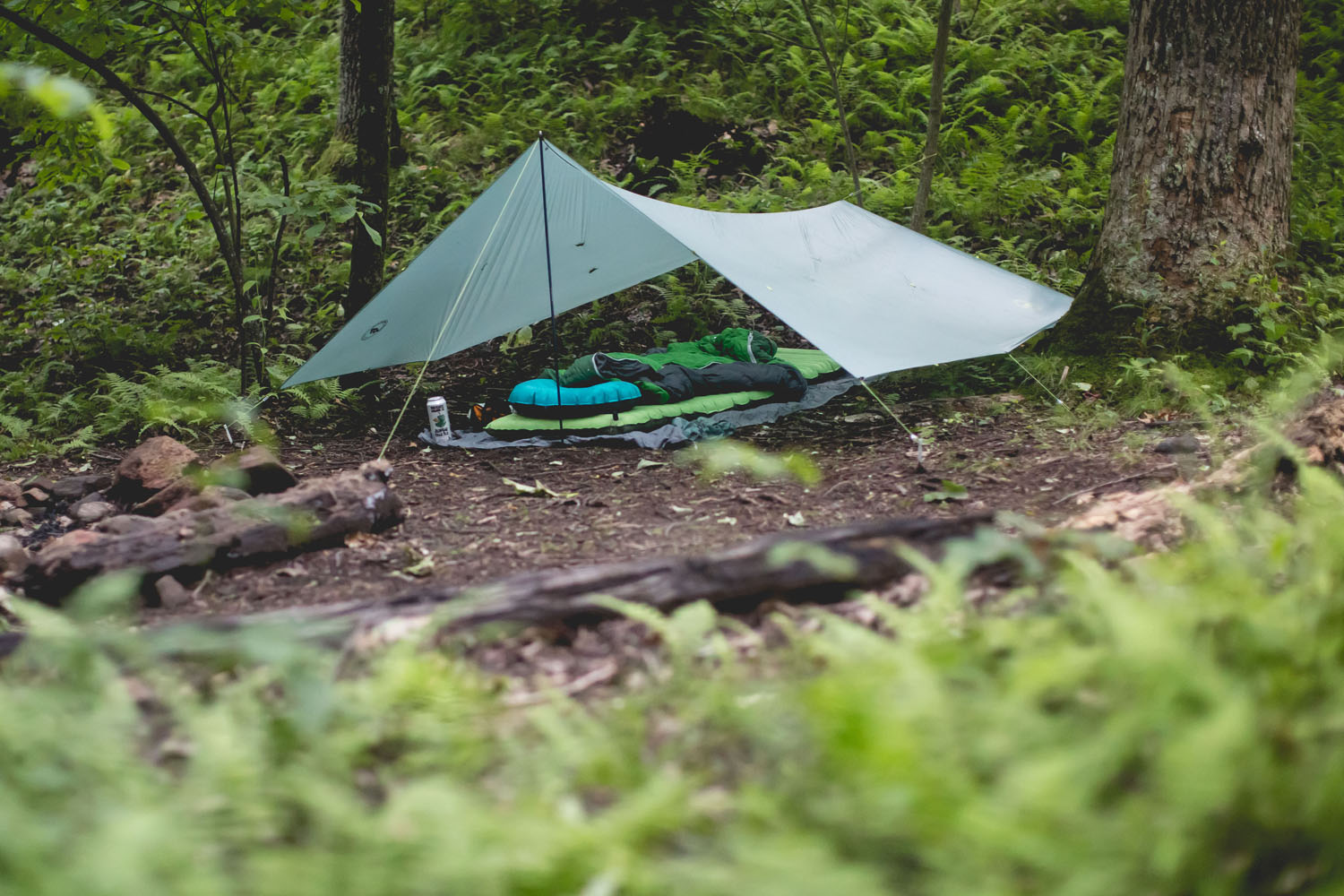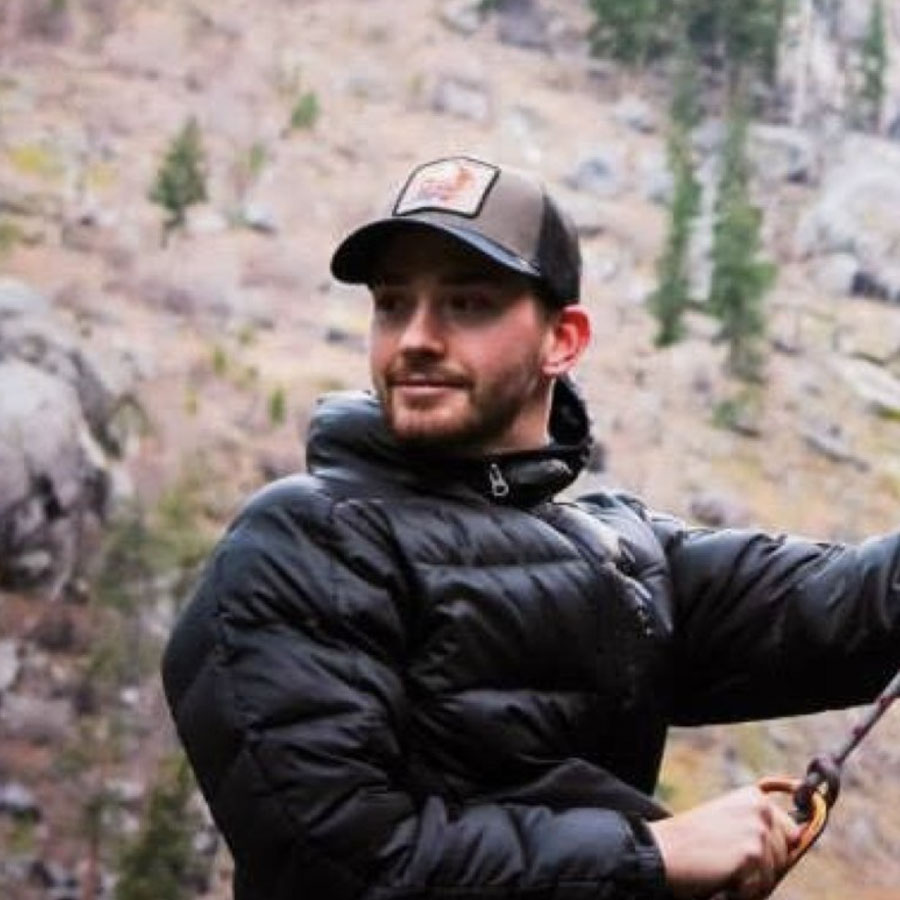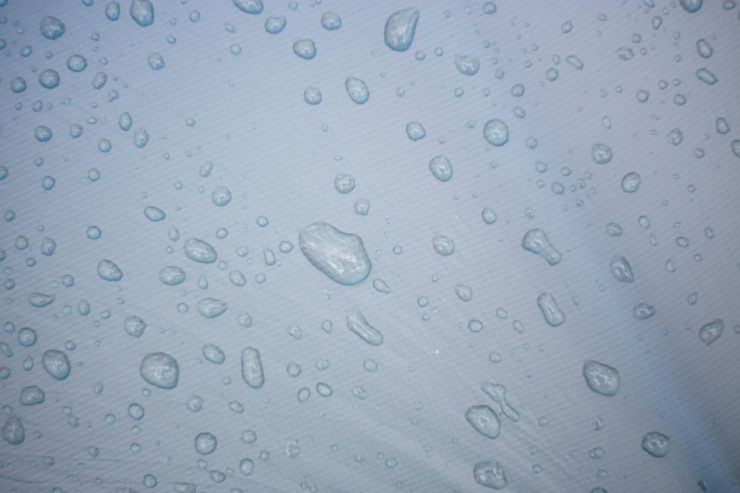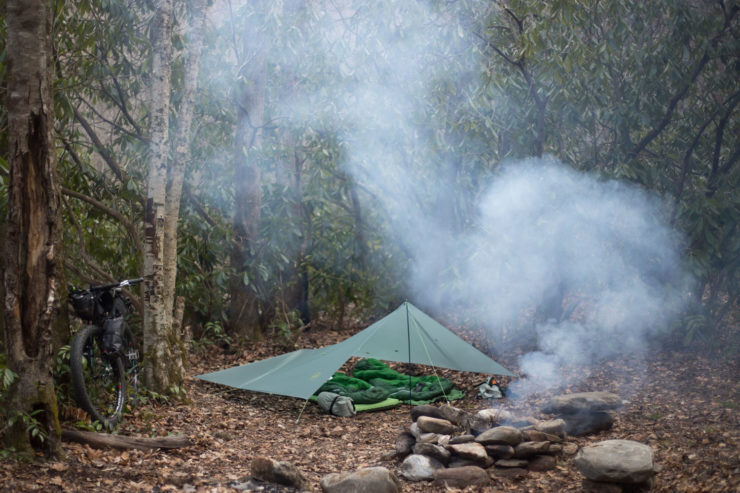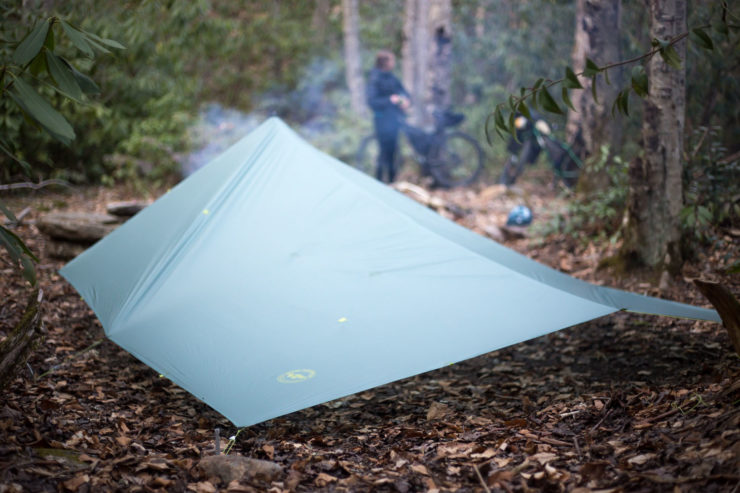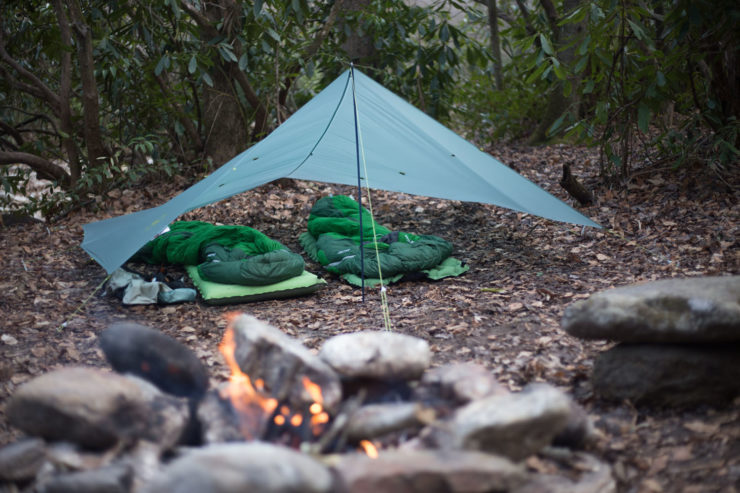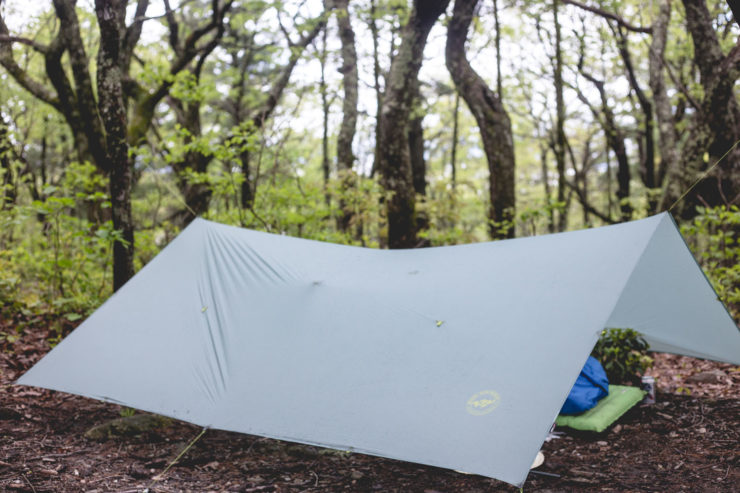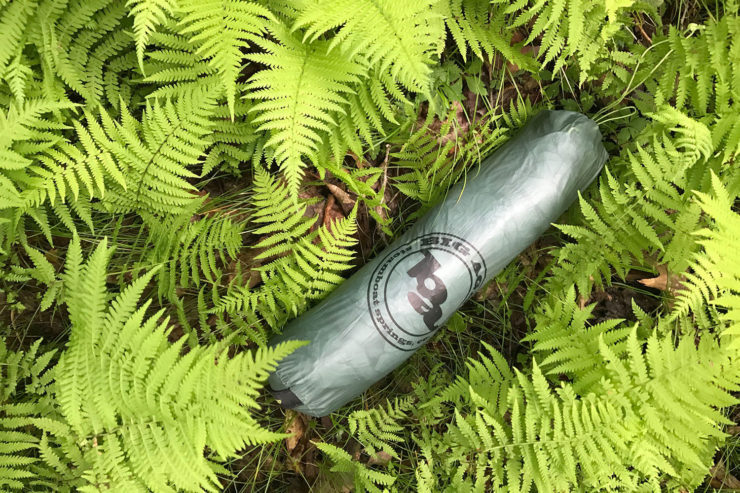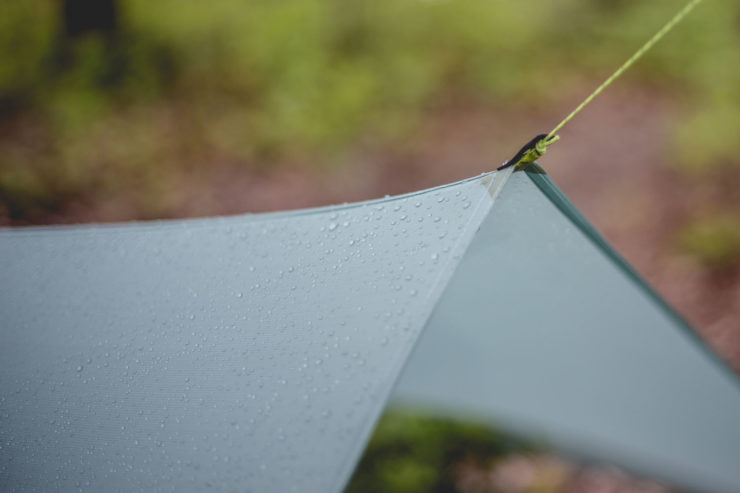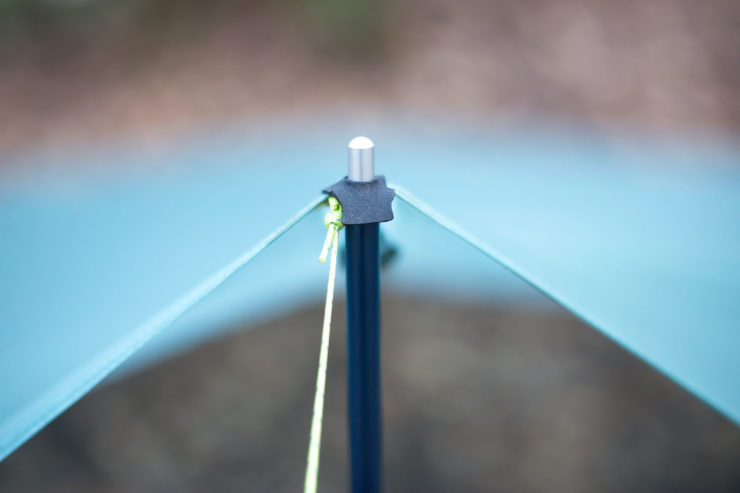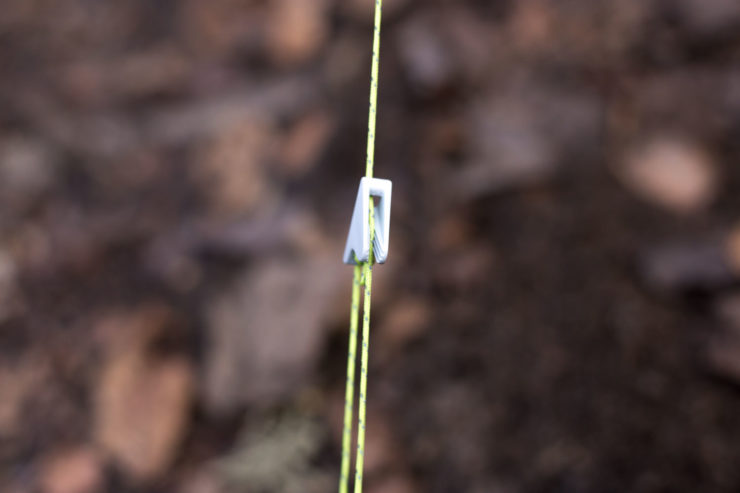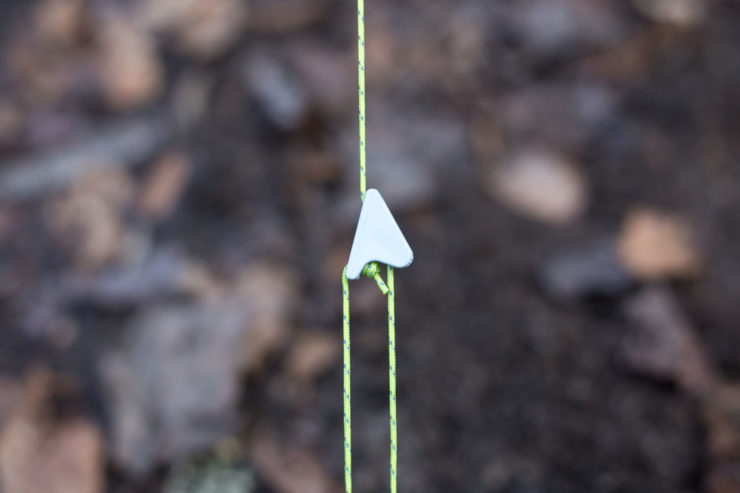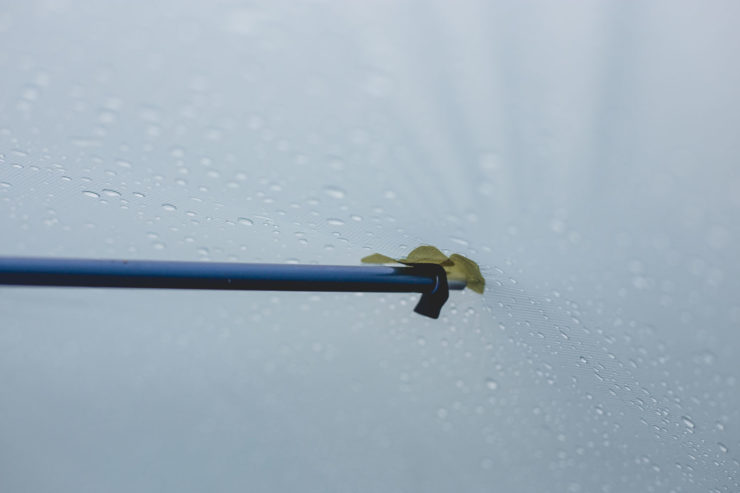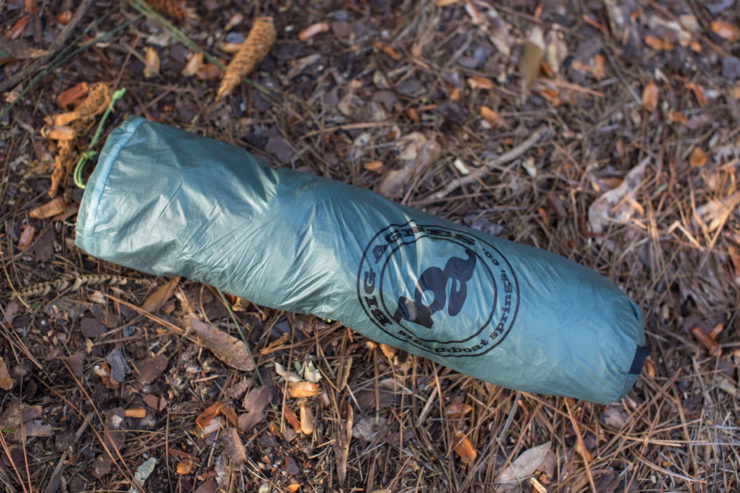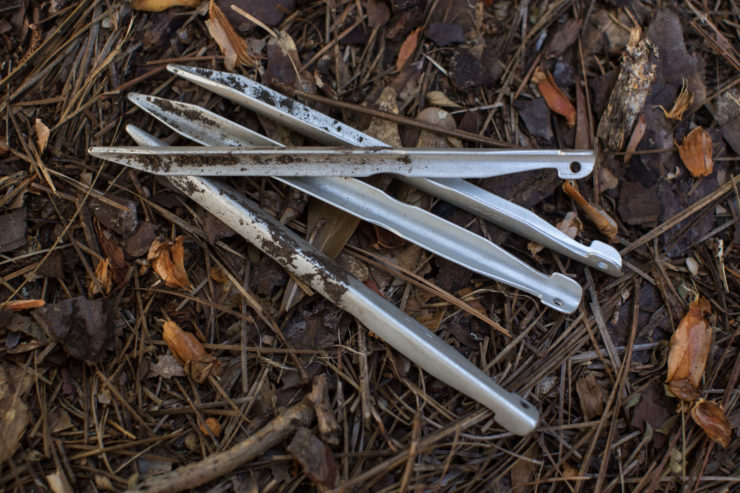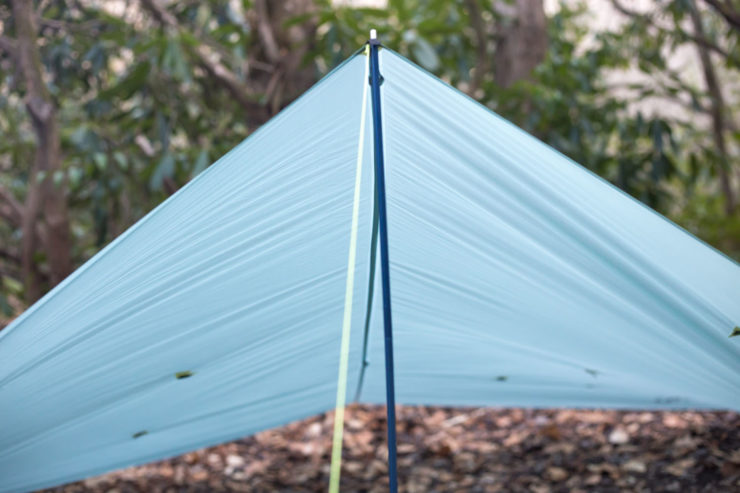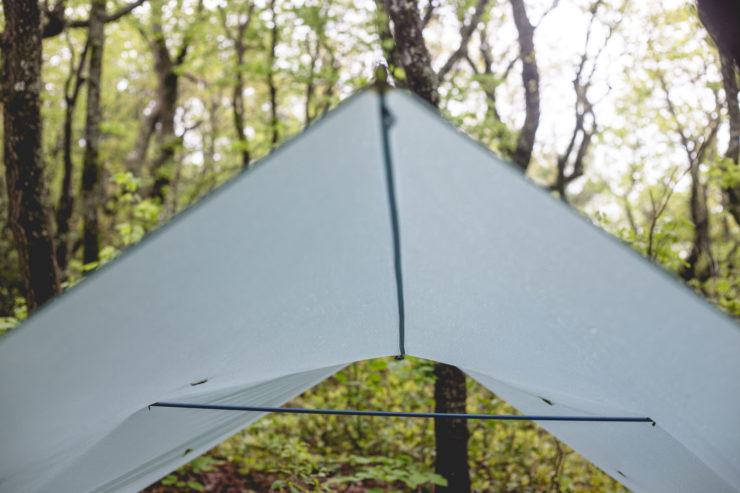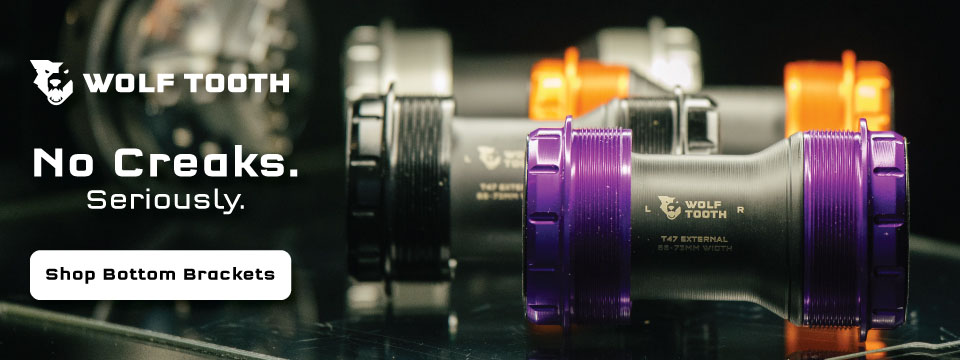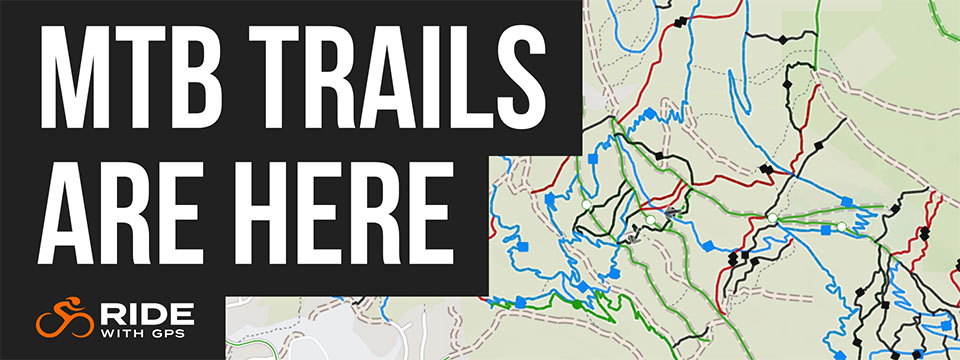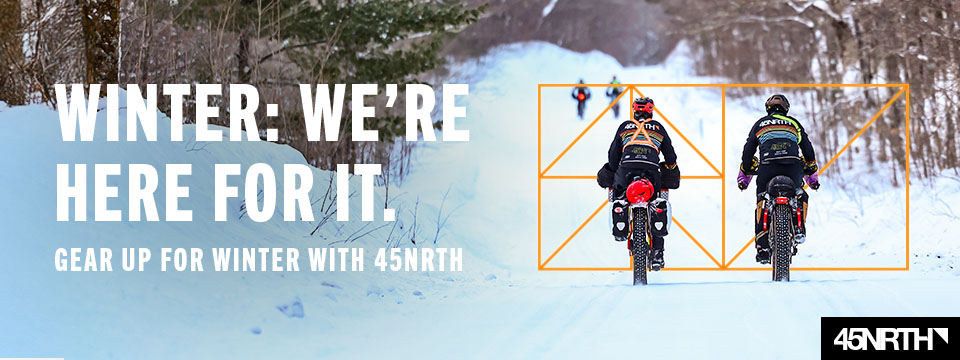To Tarp or Not to Tarp + Big Agnes Onyx UL Tarp Review
Tarping, the mustache of the backcountry camping world. There’s no denying that at one time it was a popular style. And for years after it was looked upon with misunderstanding and distaste. But, it’s back. And I assure you, it’s here to stay. In this review of the Big Agnes Onyx UL we discuss the ins and outs of tarp camping as well as the specifics of the tarp in question.
PUBLISHED Aug 9, 2017
Many of you may be reading this and saying… Hey! I’ve been tarping for years and never quit. Well, I’m sorry to say, but you are the policemen and adult movie stars of the backcountry camping world.

To tarp or not to tarp
To some, the tarp might jog a few memories as the simple shelter pitched as a cub scout. To others this may conjure images of a giant blue tarp your father also used for yard work. However, modern backpacking tarps are but a distant relative. Tarps have come a long way and now feature built-in cord tensioning systems, struts, and advanced materials such as silnylon or cuben fiber. Tarps hold a few advantages over tents in a variety of settings. Weight and packing space are the most obvious. Tarp camping offers the experience of cowboy camping under the stars but with the benefit of being able to scoot only a couple of feet in retreat back under a shelter. There are usually a few chief concerns of newbie tarpers:
Will I stay dry? … Sort of.
Won’t I get bothered by bugs? … Probably.
Will the tarp hold up to wind? … Most likely.
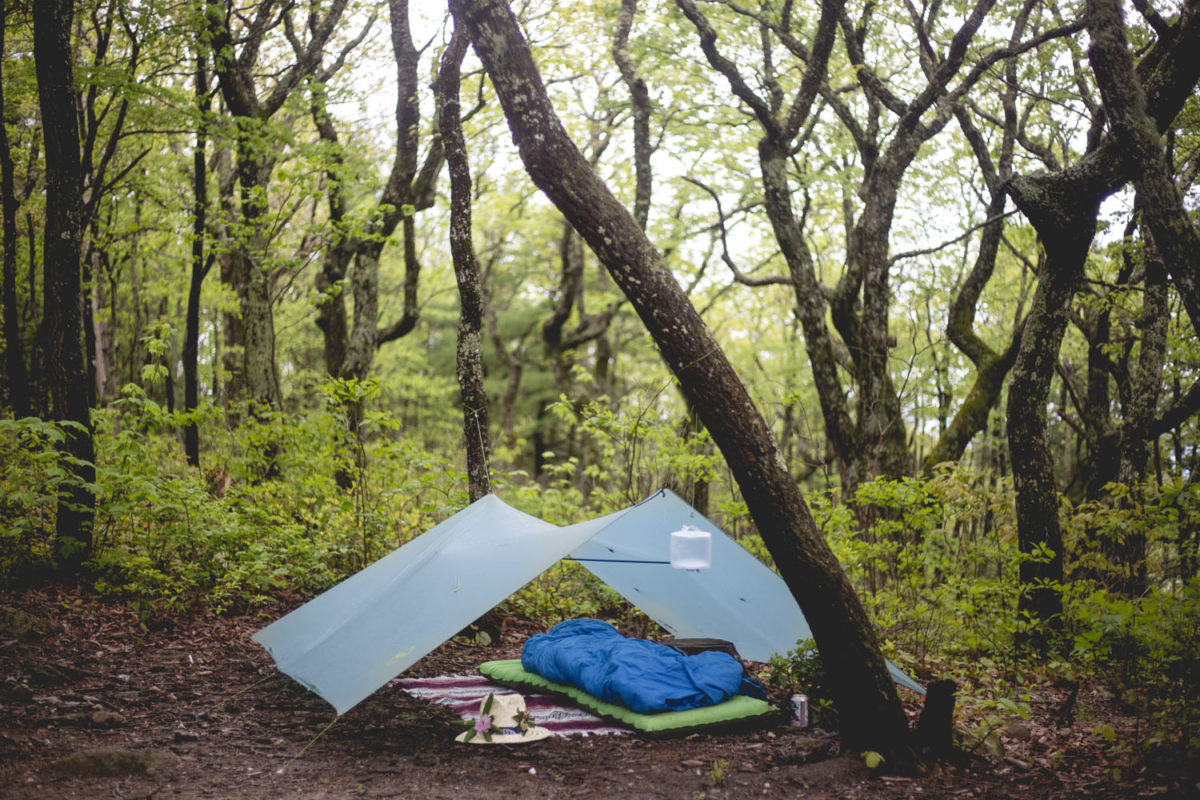
Staying Dry
Tarps can be quite water repellent depending upon the material and treatment applied. For instance the Big Agnes Onyx UL utilizes a silicone treated nylon ripstop (silnylon) with a polyurethane coating that repels water very nicely. In the right configuration (low and tight in foul weather) tarps can keep you relatively dry. Although there is always an open wall from which weather can enter during high winds.
Condensation is another factor not always considered. Temperature differences between the interior and exterior of the shelter attracts moisture and develops as dew on the interior. This happens more frequently with tarps than it does with tents. How to deal with dew, you ask? Using a ground sheet helps to block moisture transfer from the earth to the tarp. Also, increasing ventilation can help to decrease condensation. The good news, condensation normally develops on the tarp and not your sleeping bag, as long as you don’t touch the tarp you will stay mostly dry. Ground sheets also come in handy when the ground is already saturated, you picked a low tent site, or you’re looking to protect your inflatable pad from puncture.
Bugs
For many, the biggest concern is the proximity to local fauna, particularly insects. And for those folks, tarping might be a seasonal endeavor. If this is a concern, it might be important to identify your potential camping locations before purchasing a tarp. There are definitely ideal and less ideal places in which to use a tarp. Summer on the Huracan (located in Central Florida) is probably not the time nor the place for tarping. Unless of course you enjoy sporting a smattering of red dots on your forehead. When tarping in bug country, a common solution is the use of an interior bug net/liner or bivy sack (such as the Enlightened Equipment Recon or the Nemo Escape Pod that covers the face. That being said, there are plenty of locations where bugs are not an issue. Or only may be an issue on occasion during the night.
Weight/Packability
This is where tarps hold their largest advantage. The Onyx UL for instance weighs 14 oz with stakes and the included strut pole while a backpacking tent of the same cost may weigh somewhere close to 3-4lbs. Simply put, tarps use less materials to erect, and are thus lighter. Tents provide a few extra creature comforts, such as a floor and a mesh barrier between you and the bugs. Many tarpers will carry a bug net, ground sheet, or a bivy to compliment their tarp shelter; and still this often results in less weight and packing space than a tent. The more accessories you add to your tarp setup, obviously the larger and heavier it gets. Tarps are designed as minimalist shelters, why not get close to nature, that’s why you went bikepacking, correct?
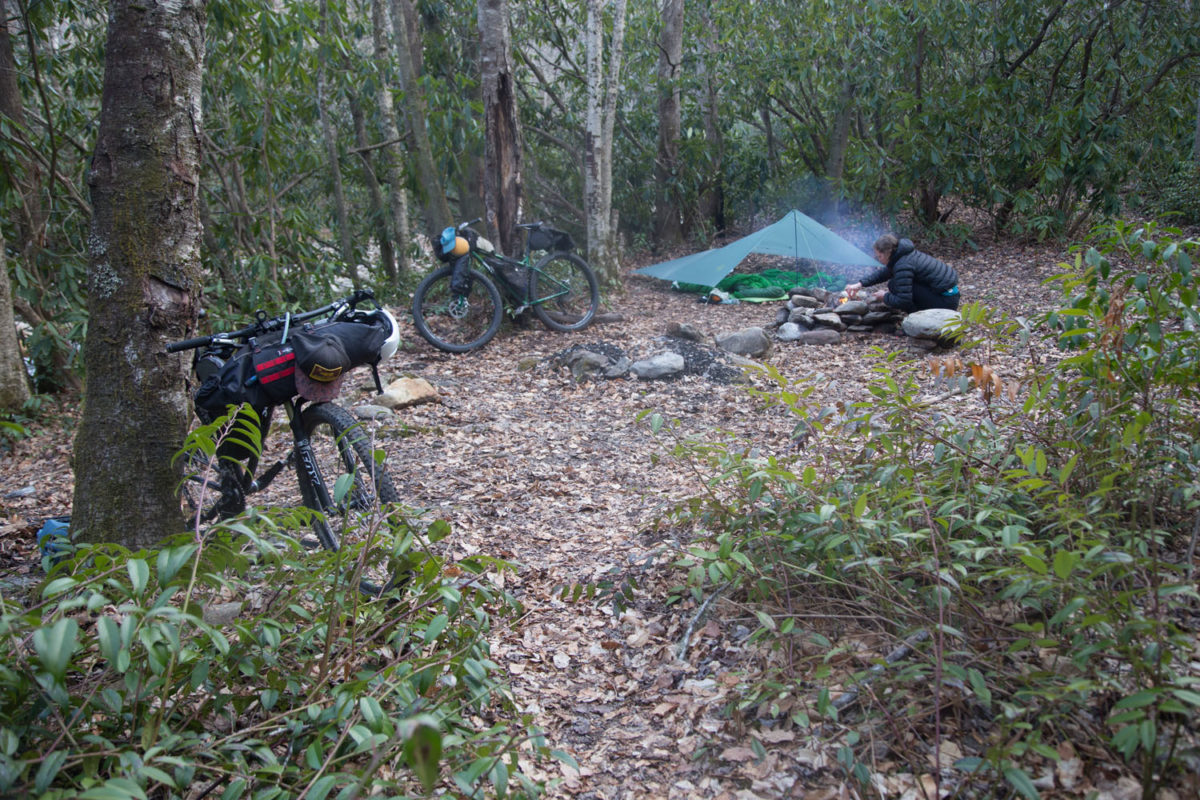
Setup
Tarps are usually more versatile than tents, especially the Onyx UL. It can be set up in a variety of manners thanks to its plethora of guy-out points. A-frame it over a couple of sleeping bags, string it between two trees, pitch it over a hammock with some extra cord, or span it out as an emergency rain shelter for an entire group during lunch. Tarp setup definitely takes some expertise and sometimes an extra hand if the wind picks up. Finding the right location to pitch your tent is critical, especially when stringing it between trees.
Pros of Tarping
- Tarping can be lighter and cheaper; depending upon how many extras you carry (bug net, ground sheet, bivy, etc.)
- Simplicity
- Proximity to nature
Cons of Tarping
- Setup takes some extra skill; and sometimes an extra hand.
- Creepy crawlies
- Condensation
The Big Agnes Onyx UL Tarp
The Big Agnes Onyx UL is the Swiss Army knife of backpacking tarps, with a multitude of configurations in a featherweight package. Its UL designation is derived from its ultralight design. Built from a strong but light silicone treated ripstop nylon (silnylon), this shelter is deserving of its name. The Onyx sports a variety of guy out points and laser-cut Hypalon tabs to allow for plenty of arrangement possibilities.
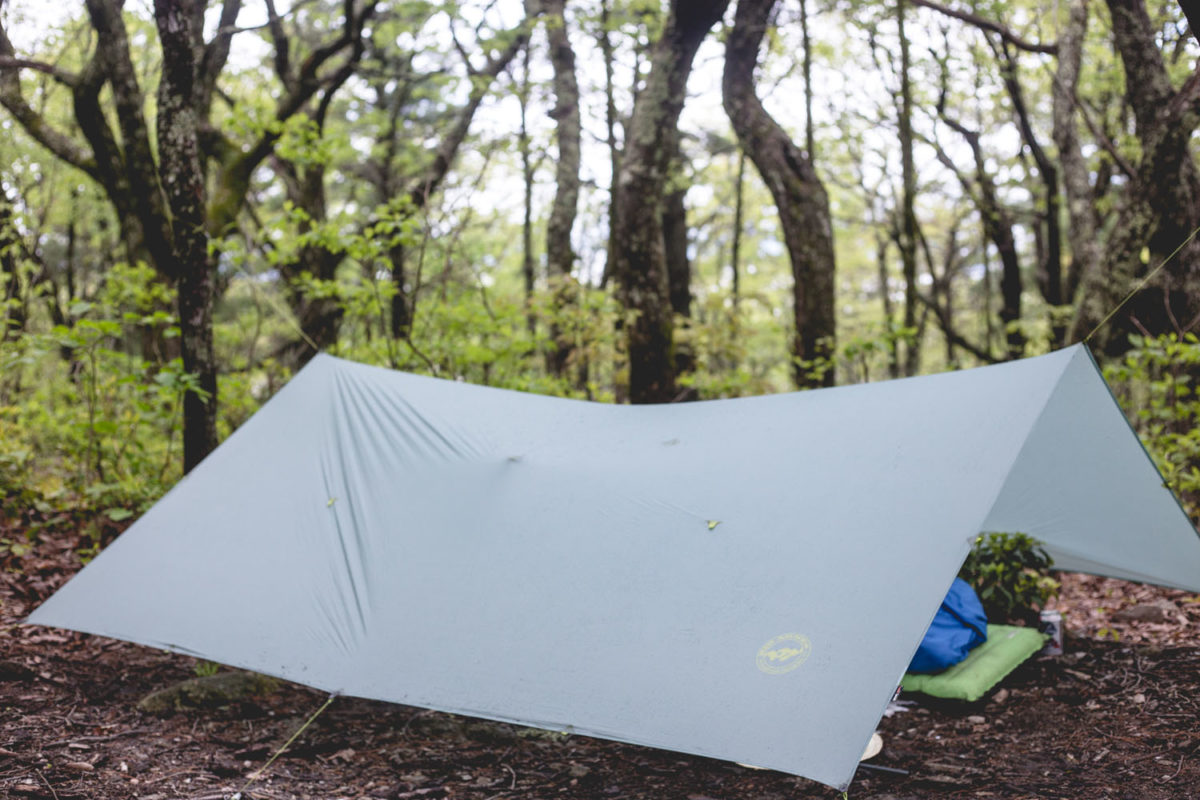
Build
The Onyx UL’s silnylon is coated with a 1200mm waterproof polyurethane coating, creating a highly waterproof fabric. After a couple of stormy nights under this tarp, I would only hesitate to use it in the worst of weather. And my only hesitation comes from the very nature of a tarp, requiring at least one side to always be open to the elements. At 72 sq. ft. this tarp is wide and long enough to tuck the sides down tight over two campers, protecting the sides from blowing rain. The included featherlite DAC pole can be used in a variety of ways. Either as a pole to keep the tarp erect or as a strut to widen the shelter to allow headroom for non-sleeping activities. The strut also helps during high winds to provide some extra lateral stability to the tarp. The laser cut Hypalon tabs fit the included pole famously, ensuring it will holdfast in even the worst of weather.
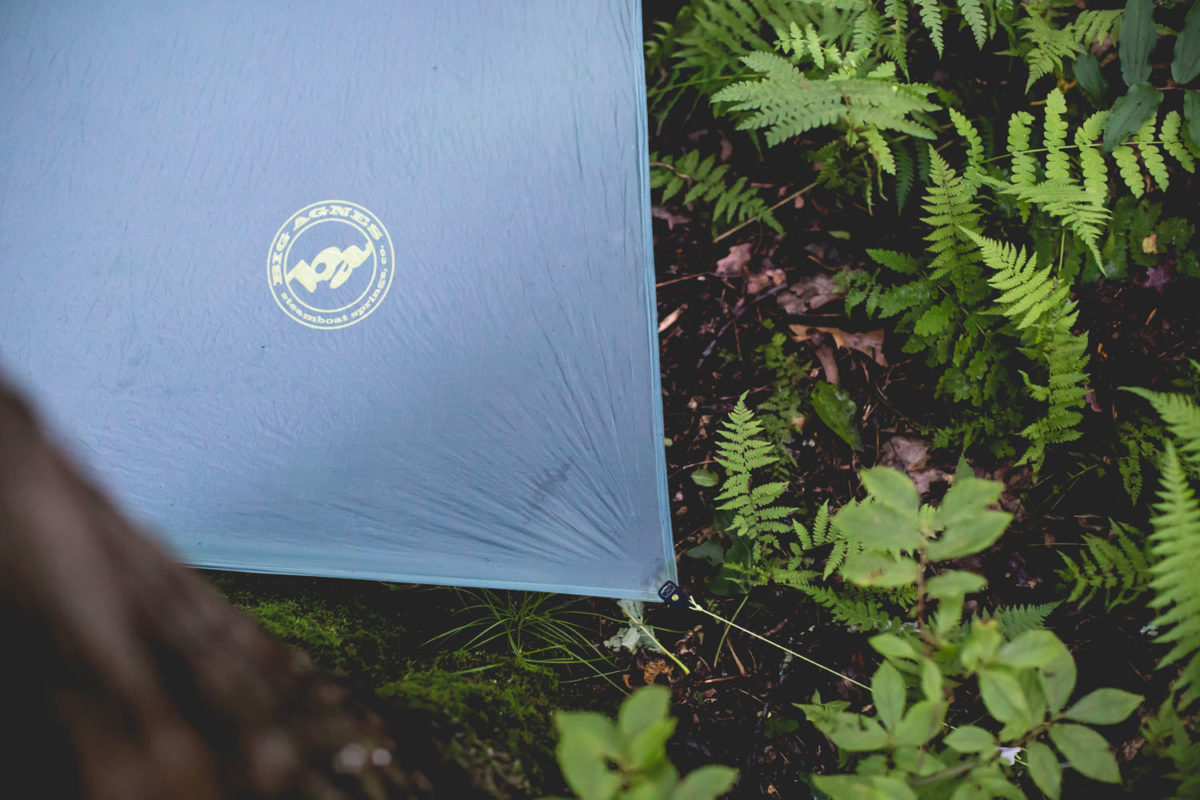
With 24 supported guy-out points, this tarp has the potential to be bombproof. Typically I use eight of the points to pull the tarp taught. The nylon has a bit of stretch to it, permitting the guy-lines to be properly tightened. The tensioning system built into each of the lines is incredibly easy to use and doesn’t slip, a common problem with other systems. Big Agnes reports that they are using the latest high tenacity nylon on the market. High tenacity nylon is typically reserved for things like seatbelts. And although we would not recommend using your tarp as such, my tests indicate the fabric is quite strong.
The Onyx comes in a silnylon stuff sack complete with an internal pole sleeve enabling the complete system to be stuffed into a neat package. When packed on the outside of a handlebar roll, the tarp wastes zero packing space. Extras include eight lightweight J-stakes and four 48-inch guylines that can be cut to size.
In Use
The Onyx was designed as a backpacking tarp. Although backpacking and bikepacking have many similarities, one key difference is that bikepackers do not carry trekking poles which unfortunately, this shelter is based upon. The most marketed configuration of this tarp is constructed with trekking poles. Luckily this tarp can be pitched in a variety of configurations thanks to the many guy-out points. My favorite configuration is the A-frame style, but instead of using trekking poles, I tie off the middle to two well placed trees. This maximizes space and allows use of the included pole as a strut to create even more headroom under the tarp. If trees aren’t available I typically stake the back side down and use the pole to prop up the front, leaving the front as the only open side. Usually I’ll place the back of the tarp near a hillside so that when staking out the back, space is created between the top of my feet and the tarp.
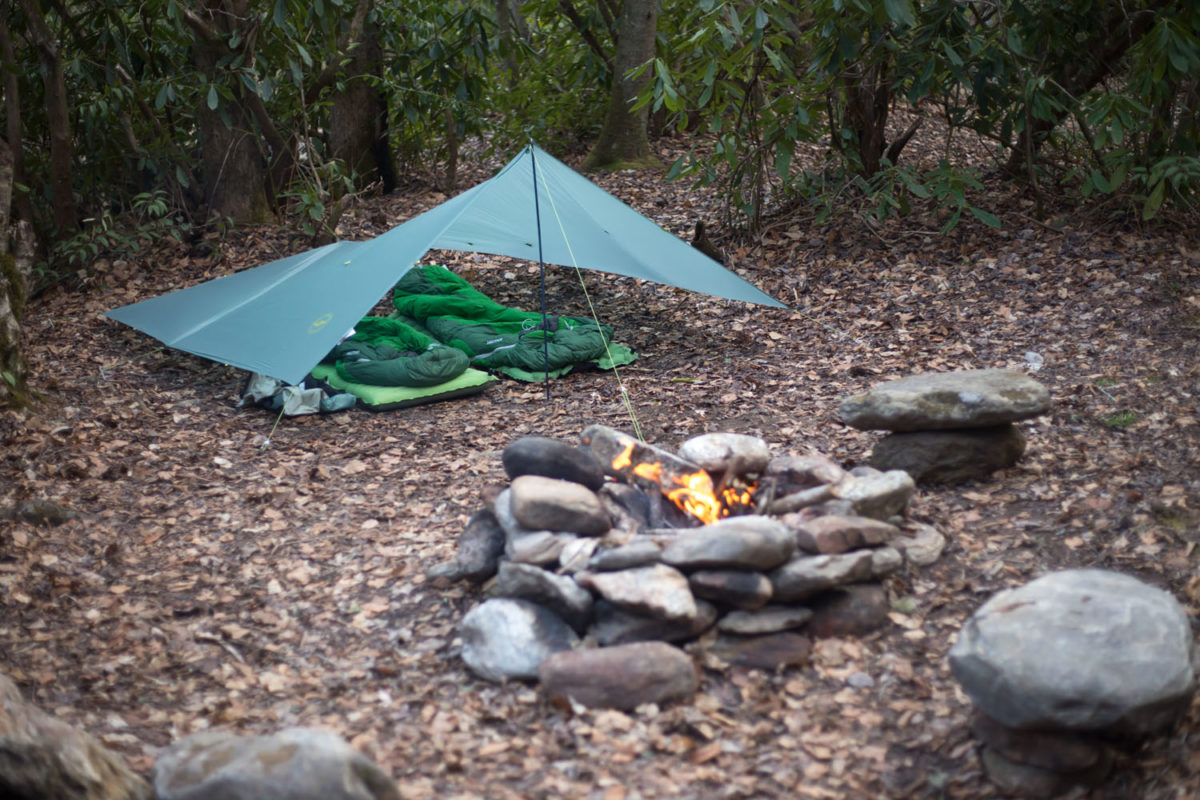
I quite enjoy the simplicity of tarping and hesitate to add extras into this shelter system. However a ground sheet is usually the one extra I’m willing to carry. Whether setting up on wet ground or preventing a puncture to my inflatable sleeping pad, it’s worth the extra weight/space. Speaking of extras, it would sometimes be nice to have two poles (or even three). An extra pole would make this setup much friendlier to bikepackers (because of the lack of trekking poles). Surely Big Agnes would be willing to sell additional poles if you contact them. Be warned that the other tarp poles listed on their site will not fit into the hypalon tabs of the Onyx.
Pros
- Lightweight – The silnylon is light and waterproof.
- Minimalist – It’s simple but you can still add extra’s if you like.
- Versatility – Can be setup in a variety of configurations.
Cons
- Designed based upon trekking poles – An additional DAC featherlite pole would be nice.
- Slow to dry – As noted on other Big Agnes UL series. Condensation buildup does not help.
- Not for every occasion – As with most tarps.
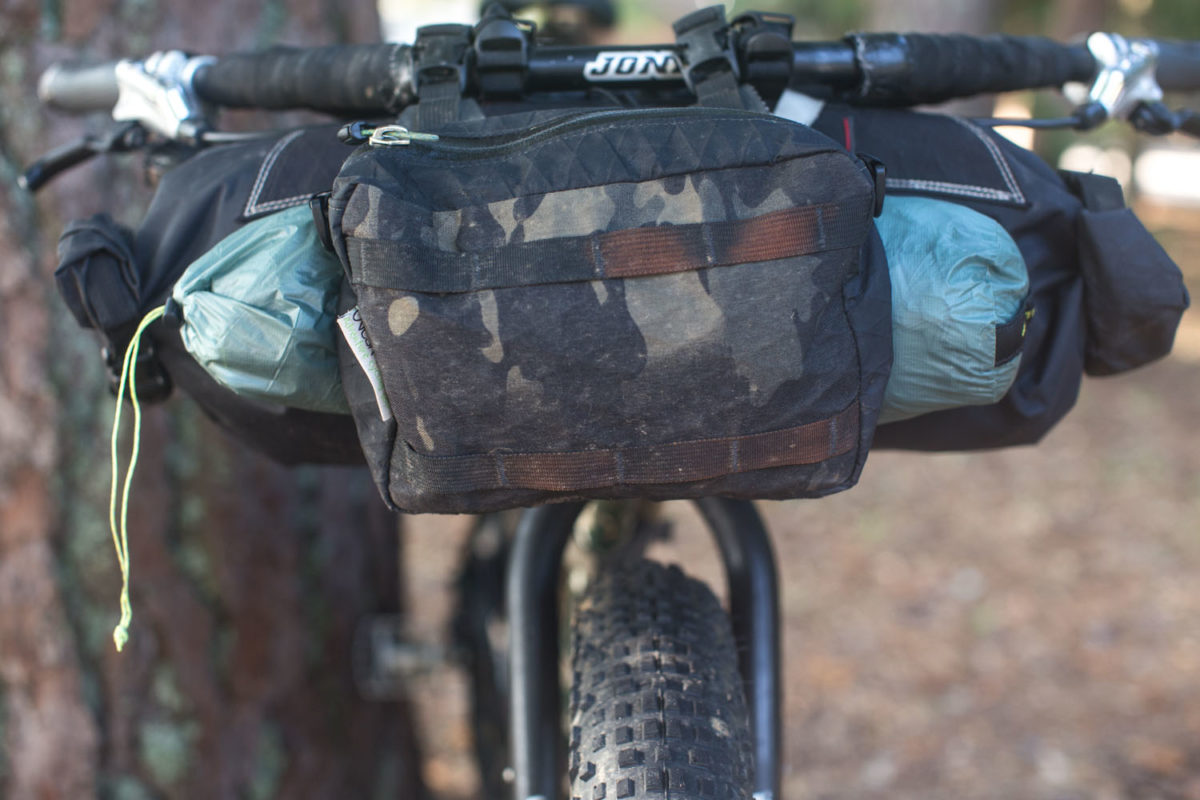
WRAP UP
I’ve used the Onyx UL in a variety of conditions, in storms and clear weather. When setup correctly for the particular occasion the Onyx doesn’t disappoint. The variety of guy-out points make this tarp applicable for most topographies as long as you’ve the creativity to boot. The strut is the tarps most notable feature, providing ample headroom for sitting upright for two campers.
Tarping isn’t for everyone or every occasion. I’ve had a couple sleepless nights swatting no-see-ems. I’ve learned when and where the tarp is most appropriate, which is a skill in its own right. This is a great minimalist shelter to add to your quiver. I for one would hesitate to have this as my only shelter. Especially if I planned on using it in a variety of settings, unless of course you have the adequate extra’s like a bug net, ground sheet, and/or bivy.
Tech Specs
- Trail Weight (without pole) 10oz / 283g
- Packed Weight (with pole) 14oz / 397g
- Packed Size 3″ x 14.5″ / 8 x 37cm
- Tyvek groundsheet 200g
- Floor Area 72 sqft / 6.7 sqm
- Price $279.95
- Contact BigAgnes.com
Please keep the conversation civil, constructive, and inclusive, or your comment will be removed.
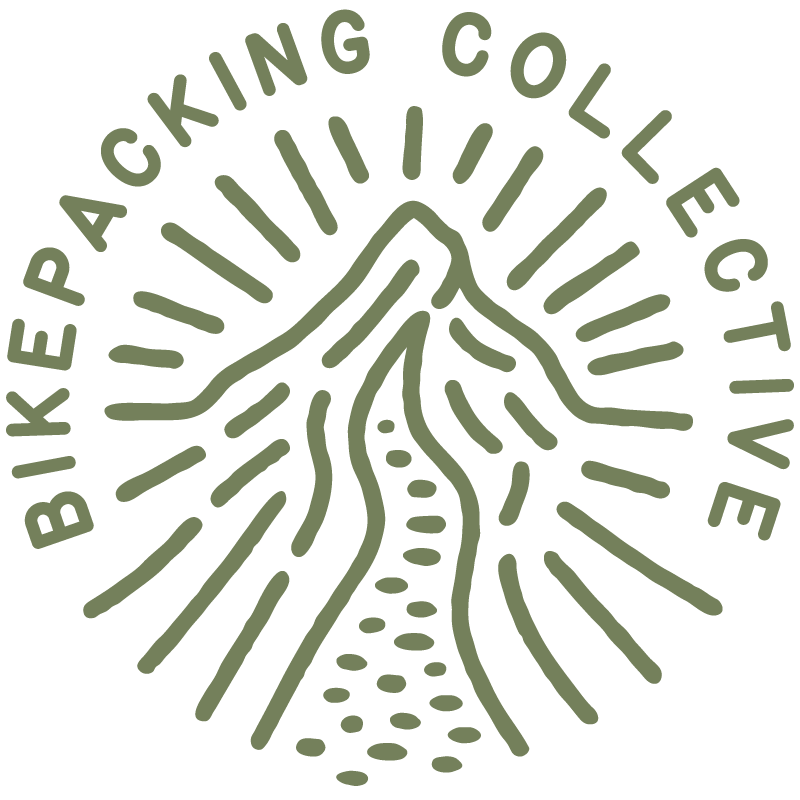
We're independent
and member-supported.
Join the Bikepacking Collective to make our work possible:







